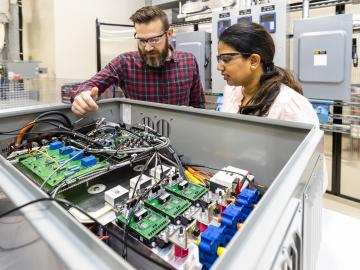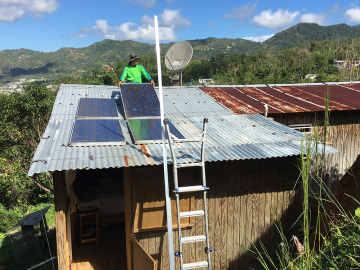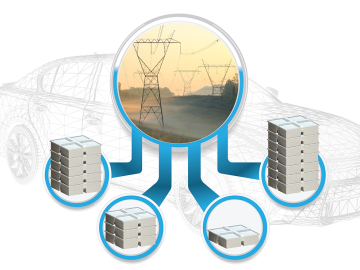
Filter News
Area of Research
News Type
News Topics
- (-) Clean Water (6)
- (-) Fusion (9)
- (-) Grid (16)
- (-) Machine Learning (10)
- (-) Mercury (3)
- (-) Molten Salt (4)
- (-) Polymers (7)
- 3-D Printing/Advanced Manufacturing (12)
- Artificial Intelligence (14)
- Big Data (6)
- Bioenergy (17)
- Biology (23)
- Biomedical (7)
- Biotechnology (3)
- Buildings (10)
- Chemical Sciences (14)
- Composites (4)
- Computer Science (19)
- Coronavirus (2)
- Critical Materials (5)
- Cybersecurity (8)
- Emergency (1)
- Energy Storage (14)
- Environment (35)
- Exascale Computing (11)
- Fossil Energy (2)
- Frontier (13)
- High-Performance Computing (18)
- Hydropower (3)
- Irradiation (1)
- Isotopes (11)
- Materials (26)
- Materials Science (13)
- Mathematics (2)
- Microelectronics (2)
- Microscopy (5)
- Nanotechnology (9)
- National Security (15)
- Neutron Science (29)
- Nuclear Energy (19)
- Partnerships (6)
- Physics (12)
- Quantum Computing (9)
- Quantum Science (5)
- Security (4)
- Simulation (21)
- Software (1)
- Space Exploration (6)
- Summit (7)
- Transportation (18)
Media Contacts

Researchers at ORNL are helping modernize power management and enhance reliability in an increasingly complex electric grid.

Chemist Jeff Foster is looking for ways to control sequencing in polymers that could result in designer molecules to benefit a variety of industries, including medicine and energy.

A new report published by ORNL assessed how advanced manufacturing and materials, such as 3D printing and novel component coatings, could offer solutions to modernize the existing fleet and design new approaches to hydropower.

Scientists at ORNL developed a competitive, eco-friendly alternative made without harmful blowing agents.

ORNL is teaming with the National Energy Technology Laboratory to jointly explore a range of technology innovations for carbon management and strategies for economic development and sustainable energy transitions in the Appalachian region.

ORNL researchers have identified specific proteins and amino acids that could control bioenergy plants’ ability to identify beneficial microbes that can enhance plant growth and storage of carbon in soils.

The Center for Bioenergy Innovation has been renewed by the Department of Energy as one of four bioenergy research centers across the nation to advance robust, economical production of plant-based fuels and chemicals.

ORNL researchers Ben Ollis and Max Ferrari will be in Adjuntas to join the March 18 festivities but also to hammer out more technical details of their contribution to the project: making the microgrids even more reliable.

A DNA editing tool adapted by Oak Ridge National Laboratory scientists makes engineering microbes for everything from bioenergy production to plastics recycling easier and faster.

When aging vehicle batteries lack the juice to power your car anymore, they may still hold energy. Yet it’s tough to find new uses for lithium-ion batteries with different makers, ages and sizes. A solution is urgently needed because battery recycling options are scarce.


